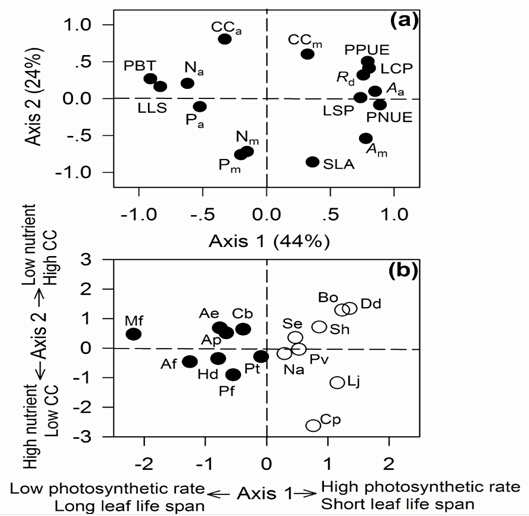

As important components of tropical and subtropical forests, ferns play crucial roles in nutrient cycling, microclimate maintenance, and forest regeneration. It is a general point of view that ferns distribute commonly in shady understory, with some species on the brink of extinction, while others thrive in disturbed open habitats, forming monospecific dense stands that are problematic as invaders. This contrasting distribution pattern of ferns has long been observed across forests of different regions, but the underlying and pivotal mechanisms responsible for the observed distribution patterns of ferns are not well understood.
Recently, researchers from Eco-physiology of Plant Water Relations Research Group at South China Botanical Garden, CAS, conducted a leaf cost-benefit analysis for 16 fern species from two forest types that represent contrasting light habitats (disturbed forest vs natural forest, with eight species from each forest) in Dinghushan Forest Ecosystem Research Station. Our results demonstrate that leaf cost–benefit analysis contributes to understanding the distribution pattern of ferns in contrasting light habitats of sub-tropical forests: light-demanding ferns employing a quick-return strategy can preempt resources and rapidly grow in the high-resource environment of open habitats; while a slow-return strategy in shade-tolerant ferns allows their persistence in the understorey of old-growth forests.
This work has been published online in Annals of Botany. (http://aob.oxfordjournals.org/cgi/content/abstract/mcv179?ijkey=YvhUDw1L4ZKzVAa&keytype=ref)

A principal component analysis for 16 leaf traits (a) across the 16 fern species (b). As shown in (b), fern from disturbed forest (open circles) and natural forest (solid circles) represent contras

